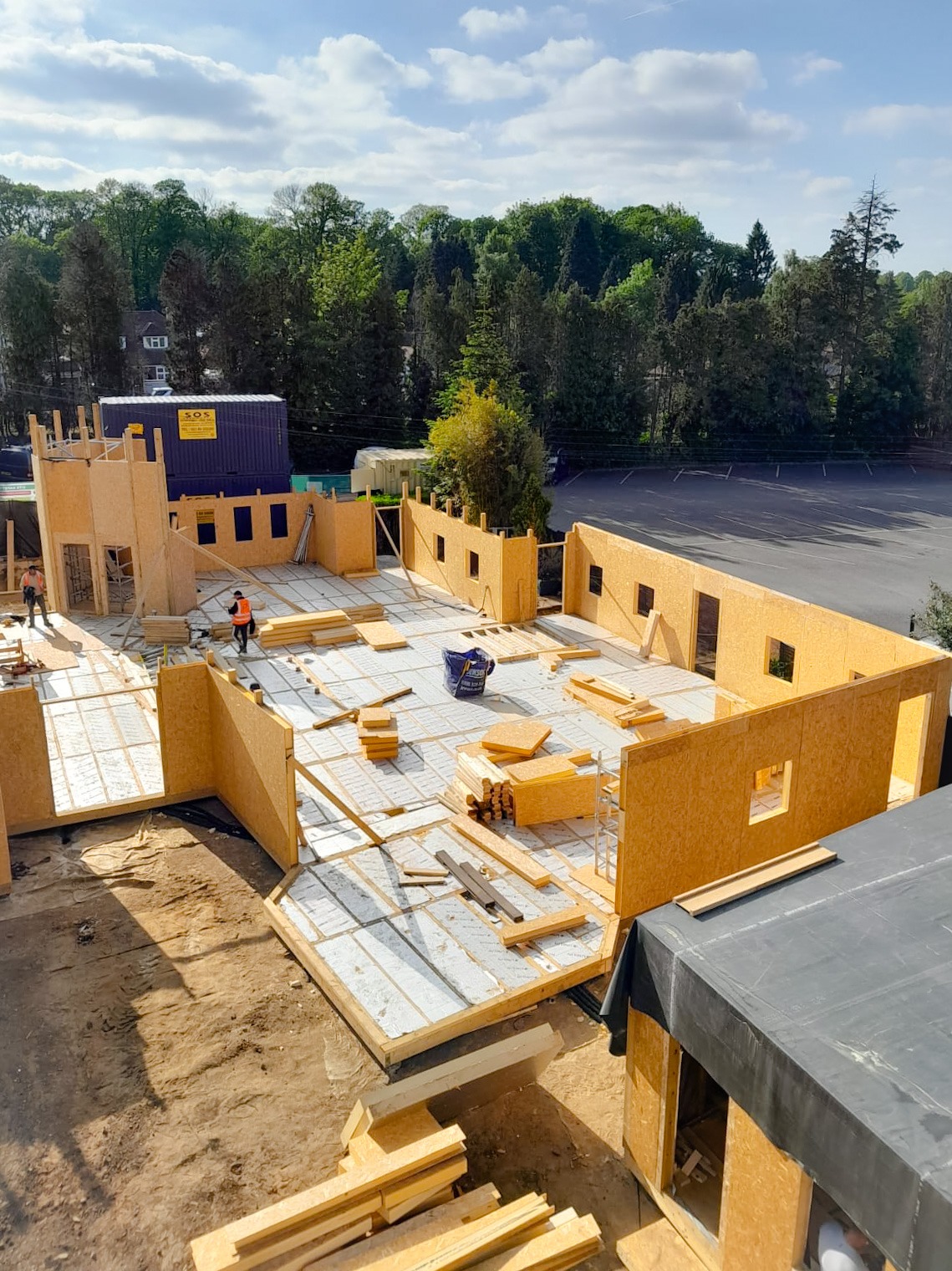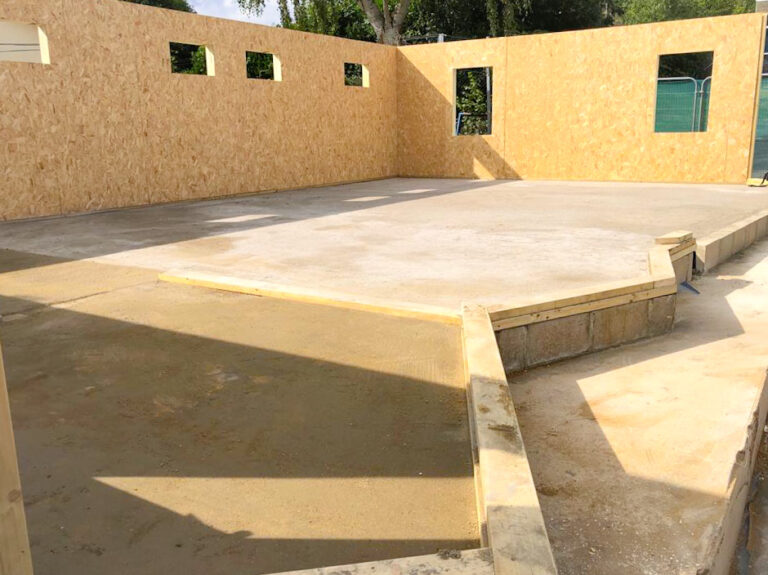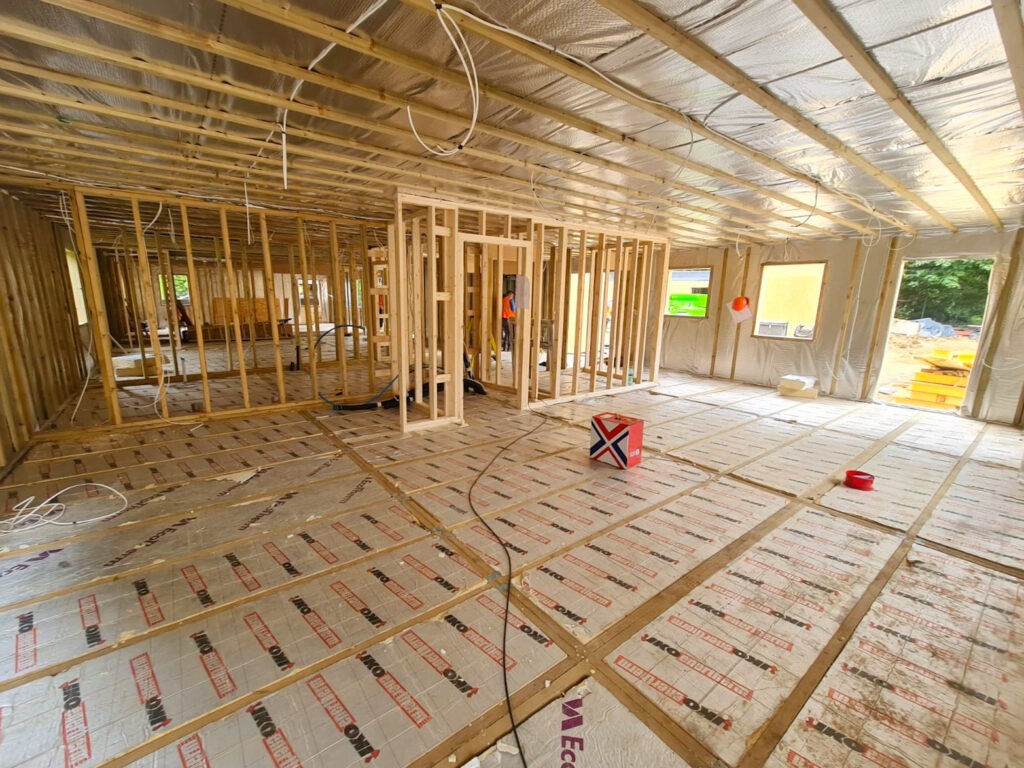In the UK, rising energy costs and the push for Net Zero living have fundamentally changed how we view construction. A modern, high-performance home is no longer just a luxury; it’s an essential investment in financial and environmental security. At the heart of this shift is the Structural Insulated Panel (SIP) system.
If you’re researching a self-build, extension, or new commercial building, one question dominates the conversation: How do SIPs home energy bills compare to traditional construction?
The short answer is: dramatically lower. This isn’t just about the insulation inside the panel, but the revolutionary way SIPs create a near-perfectly sealed building envelope, which brings us to the core concept: SIP panels airtightness.


Traditional brick-and-block or stick-built timber frame construction is inherently leaky. It’s an assembly of thousands of components, each creating a potential gap for heat to escape or cold air to enter. The two major culprits for high energy bills are:
Thermal bridging occurs where the insulation layer is interrupted by a material with higher thermal conductivity—like a timber stud, floor joist, or a concrete floor slab connection. In a traditional timber frame, the internal timber structure can account for up to 15-25% of the wall area, creating a “thermal bridge” that bypasses the insulation.
The SIPs Solution: A SIP panel is a composite sandwich of OSB (Oriented Strand Board) around a continuous, rigid insulation core. Because the insulation runs uninterrupted across the vast majority of the wall and roof structure, the timber content is drastically reduced (often down to just 3-4% in the overall wall). This minimal timber-to-timber contact virtually eliminates thermal bridging, resulting in a superior overall U-value.
Air leakage is uncontrolled air movement through gaps and cracks in the building fabric. It’s the silent killer of energy efficiency. In older and standard new-build homes, this leakage can account for a huge portion of heat loss.
The SIPs Solution: This is where SIP panels airtightness truly excels. Because SIPs are precision-engineered and manufactured in a factory, they arrive on-site as large, monolithic, straight, and true components. When these panels are jointed—using specialised splines, seals, and tapes—they form a sealed structural shell (the building envelope). This sealed system can achieve air permeability ratings as low as 0.6 m3/h⋅m2 at 50 Pa, often surpassing the requirements for high-efficiency standards like Passivhaus. In comparison, a typical modern masonry build might struggle to achieve less than 5 m3/h⋅m2.
The U-value is a measure of how quickly heat transfers through a building element. The lower the U-value, the better the thermal performance.
Construction Method | Typical U-Value (Wall) |
Standard Brick & Block (Meeting minimum UK Regs) | $0.25 – 0.30 W m2/K |
High-Performance SIP Wall (Standard Thickness) | $0.15 – 0.20 W m2/K |
Ultra-High Performance SIP Wall (Extra Thick) | $0.09 – 0.12 W m2/K |
A standard SIP wall will typically outperform a standard masonry wall, or require less thickness to achieve the same result. When combined with superior airtightness, this continuous, high-performance insulation is what directly translates to significantly reduced SIPs home energy bills.


When a building is as airtight and well-insulated as a SIP home, a new approach to ventilation is required. Traditional ventilation methods (like trickle vents and opening windows) are uncontrolled and waste the precious heat you’ve paid to generate.
For a SIP home, we strongly recommend a Mechanical Ventilation with Heat Recovery (MVHR) system.
Fresh Air, Guaranteed: The MVHR system continuously extracts stale, moist air from ‘wet’ rooms (kitchens, bathrooms) and supplies fresh, filtered air to ‘dry’ rooms (bedrooms, living spaces).
Heat Recycling: Before the extracted stale air is pushed outside, the MVHR unit passes it through a heat exchanger, recovering up to 90% of the heat and transferring it to the incoming fresh air.
The result is a constant supply of fresh, filtered air that is already warm, dramatically reducing the load on your main heating system and further lowering your SIPs home energy bills.
Choosing SIPs is adopting the Fabric First approach—prioritising the performance of the building structure over relying on expensive mechanical systems. By achieving a superb U-value and exceptional SIP panels airtightness, a SIP home minimises heat loss, creating a comfortable, draft-free environment that requires very little energy to heat.
While the upfront cost of a SIP system may be comparable or slightly higher than standard construction, the savings realised over the lifespan of the property—through a drastically reduced reliance on heating and cooling—make it one of the smartest, most essential investments you can make in your new home.

© 2023 All rights reserved
Made with ❤ with Elementor